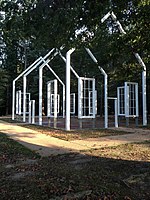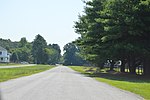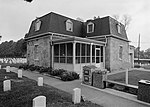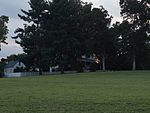Battle of Totopotomoy Creek

The Battle of Totopotomoy Creek locally , also called the Battle of Bethesda Church, Crumps Creek, Shady Grove Road, and Hanovertown, was a battle fought in Hanover County, Virginia on May 28–30, 1864, as part of Union Lt. Gen. Ulysses Grant's Overland Campaign against Confederate Gen. Robert E. Lee's Army of Northern Virginia. As Grant continued his attempts to maneuver around Lee's right flank and lure him into a general battle in the open, Lee saw an opportunity to attack the advancing V Corps, under Maj. Gen. Gouverneur K. Warren with the Second Corps of Lt. Gen. Jubal Early. Early's divisions under Maj. Gens. Robert E. Rodes and Stephen Dodson Ramseur drove the Union troops back to Shady Grove Road, but Ramseur's advance was stopped by a fierce stand of infantry and artillery fire. Grant ordered his other corps commanders to conduct a supporting attack along the entire Confederate line, which was entrenched behind Totopotomoy Creek, but only the II Corps of Maj. Gen. Winfield S. Hancock crossed the stream; they were quickly repulsed. After the battle, the Union army resumed its moves to the southeast and the Battle of Cold Harbor.
Excerpt from the Wikipedia article Battle of Totopotomoy Creek (License: CC BY-SA 3.0, Authors, Images).Battle of Totopotomoy Creek
Friedrichstraße, Berlin Mitte
Geographical coordinates (GPS) Address Phone number Website Nearby Places Show on map
Geographical coordinates (GPS)
| Latitude | Longitude |
|---|---|
| N 37.634 ° | E -77.2987 ° |
Address
Timberland
Friedrichstraße 94
10117 Berlin, Mitte
Berlin, Deutschland
Open on Google Maps








